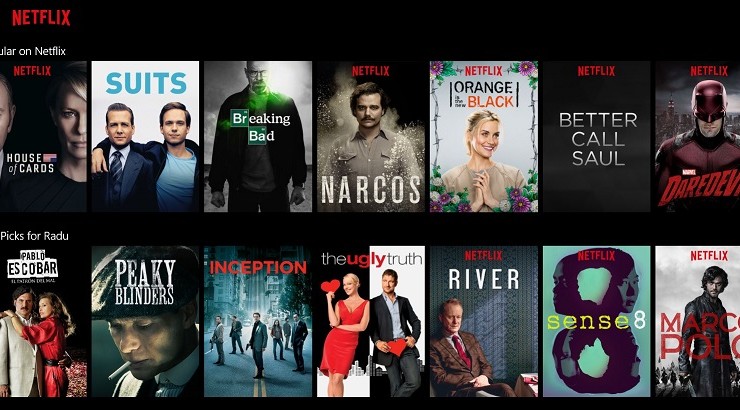
Video is one of the greatest tools for boosting engagement and connecting with your audience human-to-human. According to recent Cisco case study, streaming video lowers costs and improves timeliness and availability of corporate communications. You can actually take off the corporate veil and get closer to your users in a number of ways, such as:
- Sharing live events;
- Hosting interviews;
- Demonstrating how you create a product;
- Conducting training;
- Organising Q&A sessions etc.
Online video now accounts for 50% of all mobile traffic, by 2017 video will take up 69% of consumer internet traffic, 81% of people feature their video on their brand website and 96% of B2B companies are planning to use video in their content marketing over the next year – these numbers are quite impressive. Moreover, they indicate that most businesses have already adopted video and tried out its magical effect.
[announce]
So now let’s talk about how different businesses implement video streaming solutions and why they choose one tech stack over the other. We hope that this information will help you either to introduce video into your business model or expand your video capacities and drive even more engagement.
Airports Security

Flussonic Media Server is used as a live surveillance system in many airports, for example, in Domodedovo in Russia and also in Lviv, Ukraine, one of the cities where our offices are situated. Security service can see what’s happening in real time, so it’s not in DVR format, it’s not recorded. A security officer can stop the stream and save the episode he needs and then look through it again. I think you’re all familiar with this tech from films when a man is sitting in front of many screens, then he chooses one and watches this stream on all the monitors.
You can imagine how powerful this system is when even airports use it. If we take Wowza solution, it won’t give us the same performance because it’s written in Java, while Flussonic is written in Erlang which is more suitable for media processing. That’s why more and more big airports choose Flussonic, as they need to support many cameras and many servers for storing data and with Wowza it’s just more expensive. With Flussonic, it’s just better value for money.
Media Companies

As for big media companies, they mostly build their own custom solutions with their own servers and their own libraries, the ones like FFMPEG but customized. Actually, they build their own Wowza or Flussonic. Why do they do it? Well, it’s done to be able to resolve their custom solutions and increase productivity. Flussonic is a multi-purpose media server, it may be used as DVR, it‘s not developed only for web streaming. Naturally, they want to cover many services and as a result, productivity may suffer. So big companies write their own soft.
What kind of businesses need their own solution? Why not just use Ustream or any other more or less affordable solution? Firstly, there are projects that want to create their own video streaming. They are interested in airing their own advertising, they want to have their own branded player. External services can’t offer that. Besides, online cinemas and streamings care about their product and brand so they use servers like Wowza only for additional support.
Product-based Companies

When talking about product-based companies that use video streaming, we can give Petcube example, an IoT tech that helps people look after their pets while they’re away. Such product-based company needs everything to be associated with their brand, they simply don’t want to be associated with other brands. Their customer can’t log into their service and see Youtube logo there, the users won’t understand that. That’s why they build their own streaming solutions.
In fact, ready-made platforms like Youtube and Livestream are mostly used in social media by video bloggers and by sportsmen. The latter don’t care which platform their stream will be on. They want to show their achievements here and now. They can easily use this open system.
Universities

When a university wants to stream some course or a webinar or any other content they need to share with a limited circle of people, they usually don’t care which logo is on the player. They just want to share their lecture with the students. So in this case they use platforms like Ustream, Livestream etc.
Gamers

We also have gamers. And there are basically 2 types:
- those who play and stream;
- those who watch;
This is a huge business. Data indicates that 60% of the money in streaming business is actually allocated in gaming. It’s a huge well which is not explored to its full and huge opportunities for business lie there. There are no big platforms, no big brands that work here. Imagine that you can play angry birds during your break and stream it in 1 click with anyone who’s eager to watch. We don’t have anything like Periscope in game streaming yet.
Bloggers
There are also online bloggers who mostly use branded platforms. Small companies that don’t have the budget for developing custom solutions make use of such solutions as well. The company that doesn’t stream on a regular basis will just go the easiest way and use Youtube.
Interestingly, there are no free to play services, there is no free Ustream with ads. We predict that such service will hit the market really soon. There is no player which you can set up to meet your business needs, insert your own branding there, but in its turn, this product would place their ads there. In fact, this ad would not be such a big problem for a business, we are used to ads, they are well-targeted nowadays and, as a result, they are less irritating. Google AdSence is getting more and more advanced. Also, you can often switch off advertising altogether. And in any case, in return, you’ll get your logo on the player. In fact, such business model might be more profitable than a paid service.
Home cameras

China is producing huge amounts of these cameras but there is no software for them. You get this camera from China, switch it on, you see the picture on your smartphone. Cool! But when you want to stream it online, you come up against quite a problem. Of course, there are tech forums where people discuss it and try to come up with the solution but there is no easy way to do it. We believe that solution won’t make us wait long. Most probably you will be able to place your smartphone close to the camera, it will scan the QR code on the camera and the devices will be synchronised. By the way, the Chinese are doing a great job with these cameras – every camera has a QR code with the info about the device which helps you to set it up. There are many people who will be happy to stream their life starting with some trivial events and ending with the most intimate things. Such thing will have the future of Instagram with its own celebrities. This will be the new age of selfies, everything will be streamed.
So who uses paid custom media servers?
Firstly, there are many video streaming startups. Secondly, large companies.
Big brands

So basically we have either huge companies like Redbull which need their own services with their branding and we have big businesses like factories, shopping malls, enterprises. Online streaming doesn’t fit these guys at all, they need their internal network. Take airports – they have their servers on site. They use VPN(virtual private network) so the information (the stream), doesn’t leave the premises of an airport, it’s a closed network, an internet of their own.
Video Streaming Startups
Video streaming niche on the market is not occupied yet. These startups will naturally start to appear but there are not so many video streaming startups yet and there is a reason for that. Such projects require a huge budget, you can’t develop a streaming startup for $100,000. These are initially costly projects starting with $400, 000 investments. On the other hand, we can see how much money is invested in startups nowadays. Take Evernote, they invested 1.4 billion in it.
360 Video

We can also witness a huge rise in 360 video, or video VR. There are no specialised services to stream it yet. Many big companies are working on it, with Facebook and Youtube taking the lead. It reminds me of the birth of Android when everyone was talking about it but no one had actually seen it. And now we have the most unexpected things built on it like action cameras, washing machines, speakers etc. There is even a fridge on Android. This operating system has gone far beyond smartphones. Those who were sceptical about the development of this technology like Nokia practically seized to exist. We can predict similar development for video streaming. Tech market trends are rather steep, video streaming niche has very promising future and someone will definitely take it. It will be either someone with a fairy-tail startup story investing hard-earned $300, 000 or it will be occupied by a giant brand. In any case, even small projects like Instagram created by 2 ordinary guys, have all chances to succeed. Timing matters here. You can’t lag behind, you need to be among early adopters.
Super custom solution with your own server and your own platform is only built by very big companies which just want to scale their business. Until you reach this point, you should go for the more affordable options.


